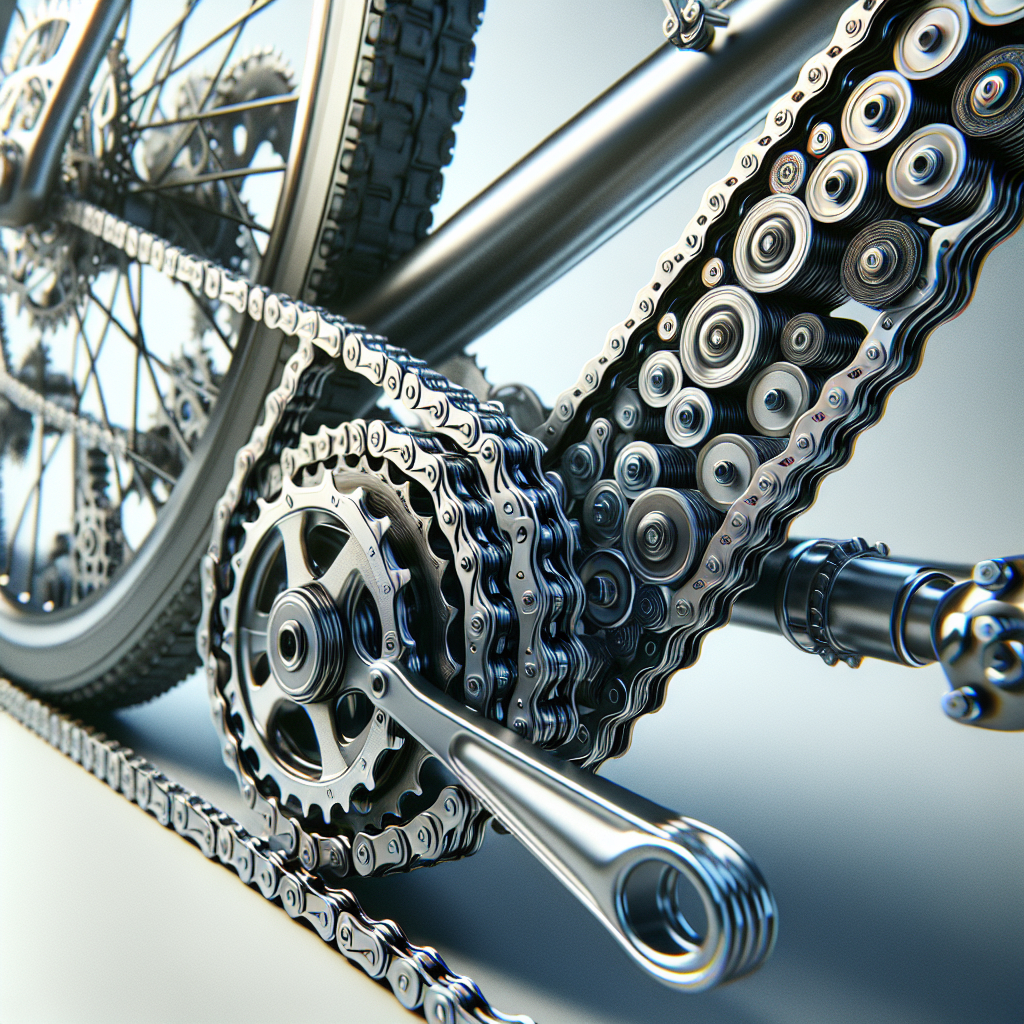
Bike chains are a crucial component of any bicycle, playing a vital role in the transmission of power from the pedals to the wheels. Proper maintenance, timely replacement, and choosing the right chain can significantly enhance your cycling experience. This article delves into the intricacies of bike chain maintenance, the signs that indicate it’s time for a replacement, and how to select the best chain for your bike.
Maintenance of Bike Chains
Maintaining your bike chain is essential for ensuring a smooth and efficient ride. Regular maintenance not only extends the life of the chain but also improves the overall performance of your bicycle. Here are some key aspects of bike chain maintenance:
Cleaning
One of the most important aspects of bike chain maintenance is keeping it clean. Dirt, grime, and debris can accumulate on the chain, leading to increased wear and tear. To clean your bike chain, follow these steps:
- Remove the chain: If your bike has a quick-release link, you can easily remove the chain. If not, use a chain tool to break the chain.
- Soak the chain: Place the chain in a container filled with a degreaser or a chain cleaning solution. Let it soak for a few minutes to loosen the dirt and grime.
- Scrub the chain: Use a brush or a chain cleaning tool to scrub the chain thoroughly. Make sure to clean all the links and rollers.
- Rinse and dry: Rinse the chain with water to remove any remaining degreaser. Dry the chain completely using a clean cloth or air drying.
Lubrication
Lubricating your bike chain is crucial for reducing friction and preventing rust. Here’s how to properly lubricate your chain:
- Choose the right lubricant: Select a lubricant that is suitable for your riding conditions. Wet lubricants are ideal for wet and muddy conditions, while dry lubricants are better for dry and dusty environments.
- Apply the lubricant: Apply a small amount of lubricant to each link of the chain. Make sure to cover the entire length of the chain.
- Wipe off excess: After applying the lubricant, wipe off any excess with a clean cloth. Excess lubricant can attract dirt and grime, leading to increased wear.
Inspection
Regularly inspecting your bike chain can help you identify potential issues before they become major problems. Look for signs of wear, such as stretched links, rust, or damaged rollers. If you notice any of these issues, it may be time to replace your chain.
When to Replace Your Bike Chain
Knowing when to replace your bike chain is crucial for maintaining the performance and longevity of your bicycle. Here are some signs that indicate it’s time for a replacement:
Chain Stretch
Over time, bike chains can stretch due to the constant pressure and friction they endure. A stretched chain can cause poor shifting performance and increased wear on the drivetrain components. To check for chain stretch, use a chain wear indicator tool. If the tool indicates that the chain has stretched beyond the recommended limit, it’s time for a replacement.
Skipping Gears
If your bike chain starts skipping gears or slipping under load, it may be a sign that the chain is worn out. This can be particularly noticeable when you’re pedaling hard or climbing hills. Replacing the chain can help restore smooth and reliable shifting.
Visible Wear and Damage
Inspect your bike chain regularly for visible signs of wear and damage. Look for rust, bent or damaged links, and worn rollers. If you notice any of these issues, it’s best to replace the chain to prevent further damage to your bike’s drivetrain.
Choosing the Right Bike Chain
Selecting the right bike chain is essential for ensuring optimal performance and compatibility with your bike. Here are some factors to consider when choosing a bike chain:
Chain Speed
Bike chains are designed to work with specific numbers of gears, known as speeds. Common options include 8-speed, 9-speed, 10-speed, 11-speed, and 12-speed chains. Make sure to choose a chain that matches the number of gears on your bike’s cassette.
Chain Length
The length of the bike chain is another important consideration. Most chains come in a standard length and need to be shortened to fit your bike. To determine the correct length, thread the chain through the drivetrain and use a chain tool to remove any excess links.
Material and Coating
Bike chains are made from various materials and coatings, each offering different levels of durability and performance. Some common options include:
- Steel chains: These are the most common and affordable option, offering good durability and performance.
- Nickel-plated chains: These chains have a nickel coating that provides additional corrosion resistance and a smoother surface for better shifting.
- Titanium chains: These are lightweight and highly durable, making them ideal for high-performance bikes. However, they are also more expensive.
Brand Compatibility
Different bike component manufacturers design their chains to work best with their specific drivetrains. For example, Shimano, SRAM, and Campagnolo each have their own chain designs. While many chains are cross-compatible, it’s often best to choose a chain from the same brand as your drivetrain components for optimal performance.
Conclusion
Maintaining, replacing, and choosing the right bike chain are essential aspects of bicycle care that can significantly impact your riding experience. Regular maintenance, including cleaning, lubrication, and inspection, can extend the life of your chain and improve your bike’s performance. Knowing when to replace your chain and selecting the right one for your bike ensures smooth and efficient operation. By paying attention to these details, you can enjoy a more reliable and enjoyable cycling experience.

